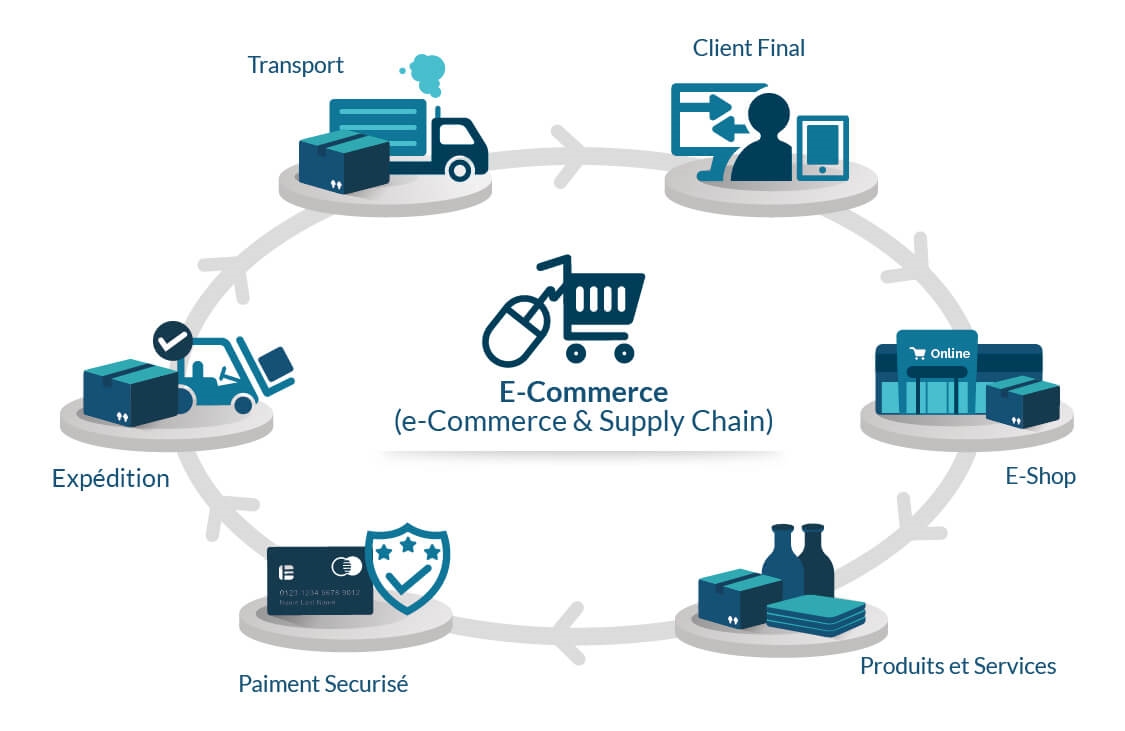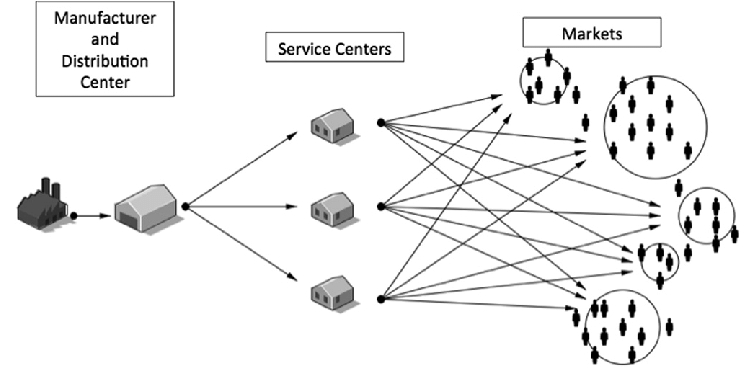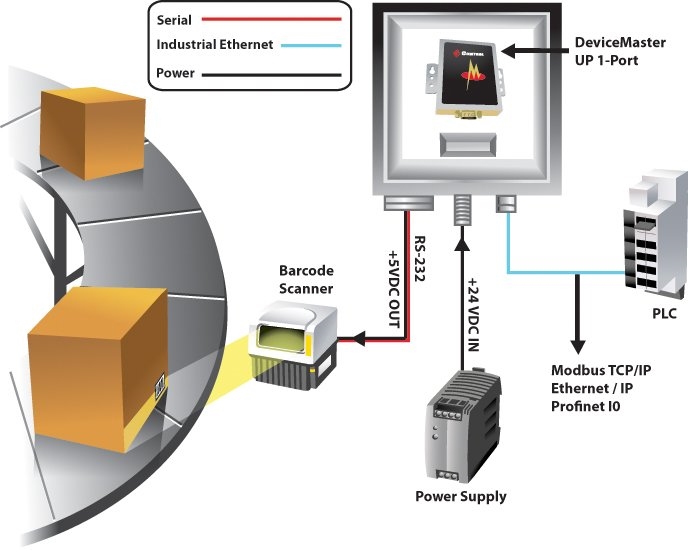A successful business strategy requires more than on-the-spot, knee-jerk reactions. Strategies need to encompass a company’s goals and future objectives.
This applies to every aspect of e-commerce, especially the supply chain. An effective supply chain model can accelerate your business processes and delight your customers.
Not having a physical store provides a lot of elbow room for e-commerce businesses to be creative and flexible with their capital, especially with the range of free business apps available for their disposal. The key, therefore, is to have an impeccable roadmap of merchandise production and distribution through smart supply chain management.
In this article, we will be looking at the best supply chain strategies you can use to improve your e-commerce business.
But first, let’s start with some definitions.
What is the supply chain?
The supply chain is the complete network of business partners that handles the procurement, manufacturing, and delivery of the right product at the right time to the right recipients.
Why is having a good supply chain strategy vital for ecommerce?
Your supply chain strategy will determine whether your primary business goal, of providing quality products and services at lower costs for higher profits, is functioning at its optimum potential.

Supply chain management best practices for ecommerce
The framework you decide to implement will ultimately affect the success or downfall of the enterprise. Each section of this article will therefore unpack best practices and provide examples from popular ecommerce sites.
Lower shipping costs and delivery speed
Having delivery time frames that are up to the standard of Amazon Prime is expected nowadays. Two in 5 customers say that if they endure a negative delivery experience they will never purchase from that seller again.
The same source shows that high shipping and slow delivery speeds can increase shopping cart abandonment rates. 44% of online customers who bail out of a purchase say that high shipping costs are the number one reason, and 24% of customers cancel orders due to slow delivery speeds.
With 73% of ecommerce shoppers expecting cheap and swift delivery, it’s clear that an ecommerce business that offers low shipping costs and fast delivery speeds will more likely retain customers and increase word-of-mouth referrals.
For this reason, it’s important to explore all of your options for shipping within your allotted capital and find the most agreeable terms, especially delivery speed.
A great way to optimize your shipping and delivery process is by using multi-distribution centers. This is the method of splitting your inventory across more than one warehouse. The benefit is that you can ship products to customers from a warehouse or center that is closer to them.
But this technique is not suitable for every business. It’s important to check if a multi-distribution center works for you by first assessing your company’s current and future goals.
When should you consider multi-distribution centers?
A business that is constantly shipping a high volume of their product or services or has very specific top-seller products could benefit from this technique. Multi-distribution will allow you to store some or all of your products nearer to your customers, which reduces shipping costs and delivery speeds.
Another scenario where multi-distribution could be beneficial is when customers are spread across different geographical locations. If you’re a company that sells local sports team merchandise to a small region, then this method would not be useful. However, if your company sells office supplies nationwide then you may want to consider it and other digital service solutions to streamline your efforts.
If you’re consistently shipping heavy products, this method may be of use to you too. It’s important to calculate your average product weight and shipping carrier costs to assess whether having multiple warehouses is cost-effective.

Ensure accurate and fast paperwork
Every ecommerce business’s aim should be to meet buyers’ needs and improve their overall customer satisfaction. Higher satisfaction results in increased customer retention, repeat buys, and a significant revenue boost. This is why you should make it your priority to mitigate human errors that can reduce satisfaction.
Statistics show that:
- Human errors in product or service selection, purchase entry, shipping details, and account information are experienced by up to 29% of online buyers.
- Human errors can decrease a business’ profits and productivity rate by up to 10%.
Automation can greatly reduce the effects of human error. Investing in inventory and order management software was a 2020 trend and will continue to be important in 2021.
Order tracking and inventory should not be exposed to human error. This is why it’s important to consider investing in automated barcode technology.
Automated barcode technology
This laser-based technology can convert barcodes on products into readable data and information. Computers can then swiftly and accurately process this, reducing the need for a middle man and the likelihood of human error.
Here are a few reasons why your ecommerce business should invest in automated barcode technology:

- New digital barcode scanners can increase your read rate accuracy percentage. This is because they have camera-like technology that can read barcodes even if there is an error in the label’s printing or the code itself is compromised.
- Not only does their sophisticated scanner improve accuracy, but it can boost speed. As products are whizzing down the conveyor belt, these scanners pick up the barcode at a high rate that prevents the need for a manual entry process. This frees staff up for other duties, decreases the number of employees needed, and reduces costs.
- As this technology transmits the information to computers, you will have the ability to collect data about your process. This means customers can track items, managers can observe and solve recurring issues, and data can be collected and analyzed to produce insights for the future.
Maximize warehouse capacity
The coronavirus pandemic has sped up the shift from bricks-and-mortar shops to ecommerce stores, and there has been a resultant increase in warehouse space investment.
Data shows that online sales will make up a third of all retail sales in the next three years as more retailers embrace omnichannel retail. This means an increase in demand and competition for warehouse space is inevitable.
Having the knowledge and ability to maximize warehouse capacity is therefore a must-have skill for any ecommerce business looking to prevent warehouse congestion. But, similar to above, every business’ warehouse maximization project will be different.
It is thus important to understand the specific risk management considerations for your project. These can include financial risk, safety risks, and technical risks. This is why you should plan and layout a smart parcel center, but moving or opening a new center is costly and should not be your first option.
Here are the most effective ways to maximize warehouse space:
- Seasonal storage. A useful method is storing products that only sell during a specific season in temporary storage.
- Increasing space efficiency. This involves using areas of your warehouse that you had not considered before, such as extending your racks, reducing the width of aisles, and adding half-pallet locations.
- Warehouse management systems (WMS). This technology can help your maximization process by suggesting the best routes to pick out or store products. WMS can also provide employees with mobile automated pick lists which reduce errors and time wasted.
Connect with the right logistics partner
A common theme throughout this article is understanding what is correct for your business specifically. It’s important to assess if your fulfillment facility can operate everything on its own.
If not, you should explore partnerships with third-party logistics (3PL) that have more capacity than your own resources.
Third-party logistics
With over 90% of 3PL users and 97% of 3PL providers reporting successful and positive results, it isn’t a surprise that the 3PL market is worth over $ 1 trillion.
The main goal behind any supply chain strategy is to increase the company’s sustainability and also maximize the benefits for both the customer and the company.
3PL companies can identify gaps in your supply chain and provide solutions to warehouse, inventory, order, and transport issues. Not only that, but they can offer expert knowledge and resources to ensure your supply chain is as streamlined as can be.
Acquiring the services of a 3PL company shouldn’t be a transactional process; it should be a partnership. It’s important that they understand your business and you understand their’s so that the best results can be achieved.
Managing a small business is intrinsically tied to seamless, optimized internal communications. Some professional phone services can provide you with sufficient tools to ensure a good communication pathway between you and the 3PL.
Here are the main benefits of partnering with a 3PL company:
- Reduces costs. 3PL companies have influence and useful connections. This means they can offer warehouse space, transportation costs, and tracking at a lower rate. You can then pass this discount onto your customers.
- More flexibility. If for some reason your sales are down, you won’t have to worry about unutilized technology, investments, and resources. This also applies if sales are on the up.
- Greater knowledge. 3PL providers are experts in the logistics industry. They are a hub of information for anything from international compliance and regulations to inventory level optimization.
Invest in technical solutions
Technology has changed chain supply management for the better. It has allowed for easier communication between companies and customers, increased the speed of certain processes, and reduced the number of errors made.

Allotting money for business software programs helps reduce manpower costs and processing times. Ecommerce businesses should thus automate where they can, particularly back-office systems such as administrative processes and accounting work.
Consider this scenario. Say you’re a company that doesn’t automate this process. A customer places an online order and this information is relayed to the back office, which accepts it. They make note of the transaction and change the inventory stock accordingly. Finally, they produce a customer invoice.
This process is slow, and data shows that humans can only produce one-tenth of the output compared to an automated process. It also increases the potential for human error.
Artificial intelligence and machine learning technologies can validate invoices, create confirmation emails, allocate cash, and process the order at a far more efficient rate.
This is also important as it eliminates mundane tasks that have the potential to disengage employees. This is problematic as a high employee engagement rate is a sign of a successful business and can increase a company’s profits by up to 21%.
Establish client-first customer support
Some businesses don’t see customer service as an aspect of the supply chain. But a supply chain isn’t finished until the customer successfully receives their product. 86% of customers are willing to spend more money on a product if they receive good customer service.
This is why you need to have a stellar customer support program that caters to their concerns as immediately as possible. This experience will ultimately drive the business forward.
Customers expect quick shipping, a competitive price, and a high level of responsiveness to different customer needs, which puts a VoIP service at a high priority for ecommerce businesses. Support channels make up a great part of customer satisfaction and retention, so making them available at every instance can become a vital advantage.
Apart from improving communication, to establish a client-first support system, you need to consider customer feedback. This can educate you on what you’re doing wrong or right along your supply chain, whether this is feedback on your website design, actual product, or shipping process.
Collecting data using methods such as surveys, interviews, and complaint reports and then analyzing this information can allow you to pinpoint exactly how to improve your supply chain for the future.
A contact center is a department that manages a company’s customer communications, such as calls, text, email, live chats, and social media. It can streamline your communication channels and improve your response times, ensuring that a customer service strategy is in place with the appropriate call center metrics.
The takeaway
An optimized supply chain is at the core of any successful ecommerce business. It can reduce operating costs and, at the same time, increase customer satisfaction. It’s a win-win.
Let’s quickly recap how you can do this:
- Depending on the nature of your sales, consider using multi-distribution centers to lower shipping costs and increase delivery speed.
- Automated barcode technology can reduce human error and significantly increase business productivity.
- Warehouse space is becoming more valuable, so learning how to optimize its capacity is crucial for the future.
- A 3PL company’s resources, connections, and expertise can drastically improve your supply chain.
- Small business software tools will not only make your business more efficient, but also increase your employee’s engagement.
- Customer satisfaction is crucial, but using customers’ dissatisfaction to optimize your supply chain is of equal importance.
Business & Finance Articles on Business 2 Community
(39)






